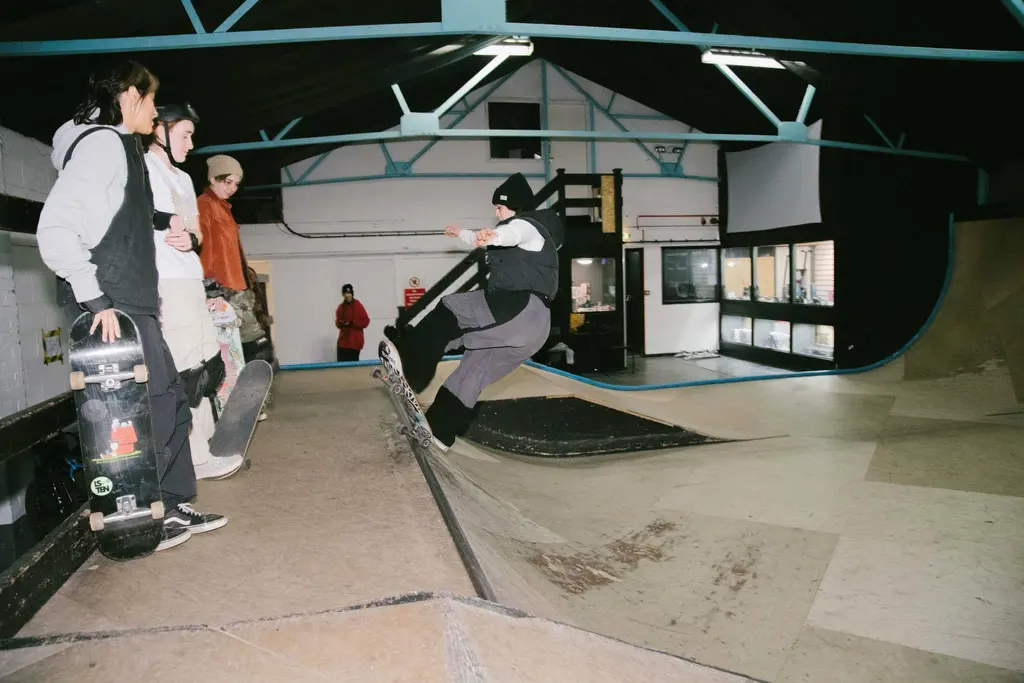The fight for racial equality in Toxteth during the ‘81 riots
- Text by Miss Rosen
- Photography by Mike Abrahams

The Toxteth section of Liverpool is the oldest Black community in England, dating back to the American Revolution of 1776. Over the centuries, it has been home to a bustling mix of West Indian, African, Chinese, Irish, and Welsh immigrants.
But that didn’t stop racism from infiltrating the area: after World War I, white Britons blamed Black people for unemployment and housing insecurity. Their rage erupted into riots in 1919, when thousands ran amok for days. Their rampage resulted in the destruction of Black-owned properties and the death of 24-year-old Bermudan Charles Wootton, who was chased into the River Mersey by a mob, as police looked on. Police officers listed drowning as the cause of the Bermudian’s death; no one was held accountable.
The underlying bigotry continued to fester, creating tensions that resulted in a Black-led rebellion on July 3, 1981. A large crowd had gathered after word got out that an unidentified young Black man had been arrested and placed in the back of a police van.

Snooker club, Granby Triangle

Young men on Granby Street
Among those in attendance was Leroy Cooper, a 21-year-old photography student, who was violently arrested in front of the crowd, sparking nine days of civil unrest that resulted in the death of a disabled man, David Moore, 500 arrests, and the destruction of 70 buildings. The subsequent Scarman Report, which focused largely on the Brixton uprising of the same year, acknowledged that systemic issues facing Black communities in the UK were the root cause of the protests.
Liverpool native Mike Abrahams, who has just released Toxteth 1979-1982 (Café Royal Books), remembers the uprising well. “One of the few buildings to remain intact was the Charles Wootton College [named after the Bermudan who was murdered], close to the junction of Granby Street and Upper Parliament Street. Just down the road from that, The Rackets Club was burnt to the ground. This was a sports club that had refused my father membership because he was a Jew.”
Granby Street lies at the heart of Toxteth, a place where Abrahams spent much of his youth. He got into photography at the age of 12 and studied at the Polytechnic of Central London. After graduating in 1975, Abrahams worked as a freelance photojournalist in London and co-founded Network Photographers in 1981 with Barry Lewis and Judah Passow, among others.

Young men on Granby Street

The Toxteth Triangle
“I would return to Liverpool to visit my parents and would wander the streets with my camera. Liverpool suffered badly in the recession of the ‘70s. Heavy industry was leaving the city and the final nail in the coffin was when Margaret Thatcher came to power in 1979.”
Abrahams offers an insider’s portrait Toxteth, offering a measured and empathetic understanding of the people charged to survive and overcome the challenges they faced as Black Britons. “I spent my late teens and early 20s in the night clubs and the basements of the very run down and near-derelict terraces. There were some 40 night clubs in the area, and these clubs offered security, safety and sanctuary from the hostile world in the town centre,” Abrahams says.
“In some ways, much has changed, and in others little. Institutional racism remains endemic. We are living in a society that prides individualism over the collective. The energy of the young and their ability to demand and create a new reality must be the hope for the future.”

Young men on Granby Street

Protesting against the police racist and oppressive tactics in Toxteth during the riots

Jam session in Peewee’s barbershop, Granby Street
Toxteth 1979 – 1982 is out now on Café Royal Books.
Follow Miss Rosen on Twitter.
Enjoyed this article? Like Huck on Facebook or follow us on Twitter.
Latest on Huck

Clubbing is good for your health, according to neuroscientists
We Become One — A new documentary explores the positive effects that dance music and shared musical experiences can have on the human brain.
Written by: Zahra Onsori

In England’s rural north, skateboarding is femme
Zine scene — A new project from visual artist Juliet Klottrup, ‘Skate Like a Lass’, spotlights the FLINTA+ collectives who are redefining what it means to be a skater.
Written by: Zahra Onsori

Donald Trump says that “everything is computer” – does he have a point?
Huck’s March dispatch — As AI creeps increasingly into our daily lives and our attention spans are lost to social media content, newsletter columnist Emma Garland unpicks the US President’s eyebrow-raising turn of phrase at a White House car show.
Written by: Emma Garland

How the ’70s radicalised the landscape of photography
The ’70s Lens — Half a century ago, visionary photographers including Nan Goldin, Joel Meyerowitz and Larry Sultan pushed the envelope of what was possible in image-making, blurring the boundaries between high and low art. A new exhibition revisits the era.
Written by: Miss Rosen

The inner-city riding club serving Newcastle’s youth
Stepney Western — Harry Lawson’s new experimental documentary sets up a Western film in the English North East, by focusing on a stables that also functions as a charity for disadvantaged young people.
Written by: Isaac Muk

The British intimacy of ‘the afters’
Not Going Home — In 1998, photographer Mischa Haller travelled to nightclubs just as their doors were shutting and dancers streamed out onto the streets, capturing the country’s partying youth in the early morning haze.
Written by: Ella Glossop